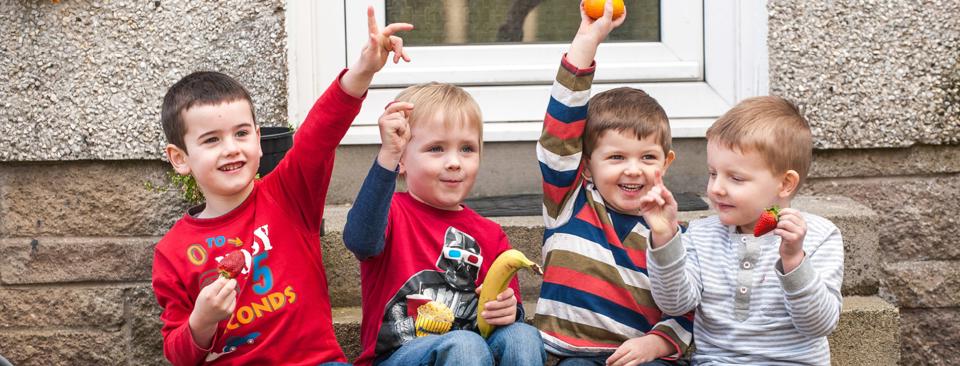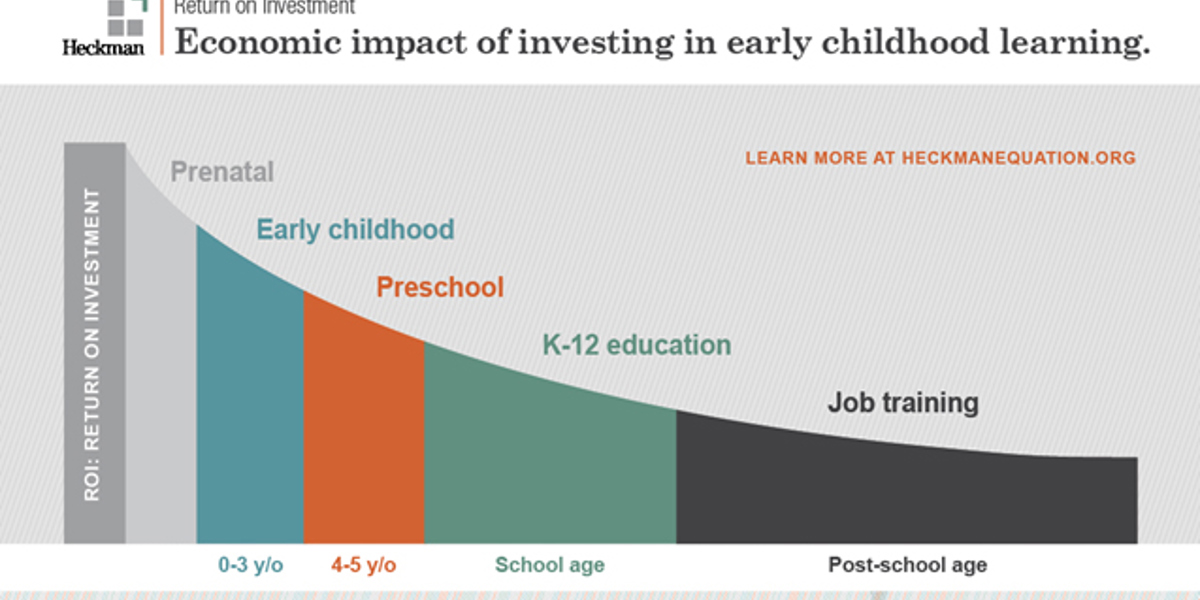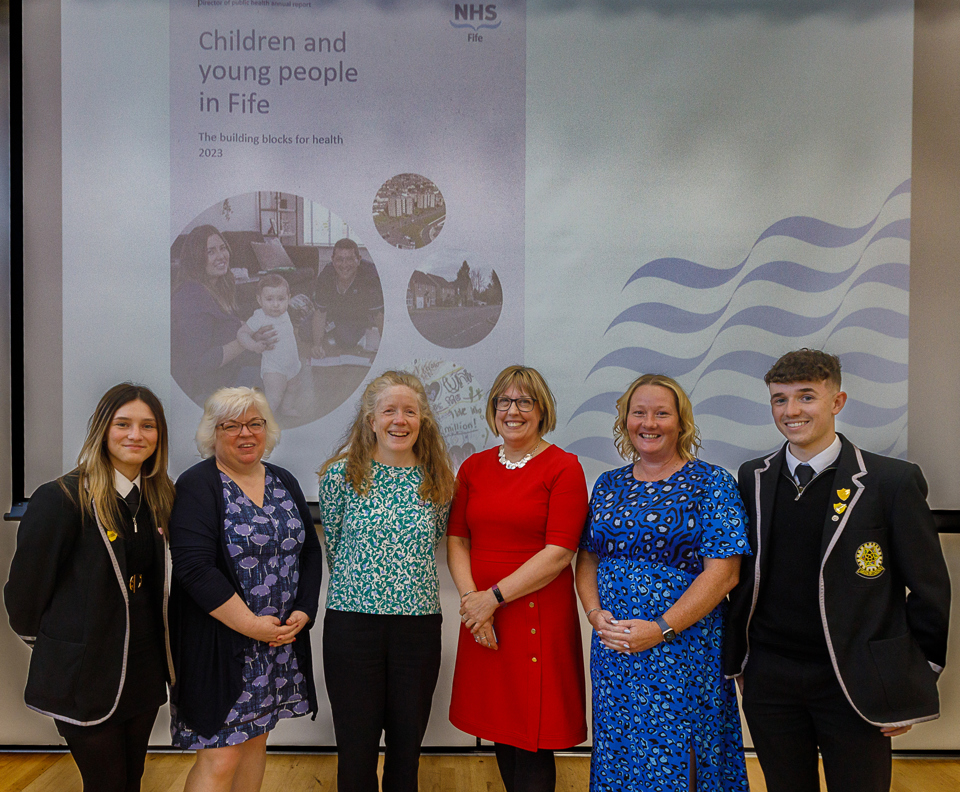The Annual Report sets out the key issues affecting the health and wellbeing for people in Fife, helping enable more targeted local responses to be developed.

Colleagues from across the Public Health Department, Health promotion service, Fife Health and Social Care partnership, Fife council and third sector organisations have all contributed to this report. Thank you to everyone for their support bringing together this report and the ongoing contributions to public health in Fife.
The health benefits of investment in the early years of life are well understood now from an economic perspective and this has been summarised in the chart developed by the economics Professor James Heckmann.
This year’s Report looks in detail at a wide variety of factors affecting the health and wellbeing of children and young people in Fife, covering physical and mental health and wellbeing and tackling inequalities.
Key stats
- Child poverty rates have risen recently from 17% in 2020 to 23% in 21/22 before housing costs. This rate varies across Fife from 11% in some areas to 35.9% in others.
- The number of under 18s in Fife is currently declining, with 71,746 estimated in 2021, accounting for around 19% of the population.
- The birth rate in Fife declining, in a similar pattern to Scotland, with 3157 births in 2021.

Child poverty and cost of living
Child poverty affects opportunities for health, learning and development from pregnancy onwards, which can have lifelong consequences. The Child Poverty (Scotland) Act 2017 places duties on public authorities to take action to reduce and mitigate child poverty.
The current cost of living crisis has made it more difficult for many families with almost one in four children in Fife living in poverty before housing costs.
There are six child poverty priority groups which cover 90% of families with children in poverty: lone parents, families affected by disability, children under 1 year, mothers under 25 years, ethnicity, families with >3 children.
Poverty rates are also higher in some parts of Fife than others, generally following patterns of deprivation.
Fife has published several Local Child Poverty Action Reports as required by the Act. The report for 2023 will be part of the overall Tackling Poverty and Preventing Crisis report.
UNCRC- United Nations Convention on the Rights of the Child
The UNCRC (Incorporation) (Scotland) Bill was introduced to the Scottish Parliament on 1 September 2020 and it is expected that new legislation will be passed in 2023.
The UK signed up to the United UNCRC which came into force in January 1992 and is the global gold standard for children’s rights.
The new law may make it unlawful for public authorities to act incompatibly with the incorporated UNCRC requirements, giving children, young people and their representatives the power to go to court to enforce their rights. An example is article 27: Every child has the right to a good enough standard of living to meet their physical and social needs including a proper house, food and clothing.
The voice of children, young people and families is very important as outlined in the UN Convention on the Rights of the Child, or UNCRC. As part of the process of producing the report, we consulted with groups of young people to gather their views.
The Fife Children and Young Peoples' Health Survey took place in Fife schools in March 2023, and results will be available later in the year.
The promise and care experienced children and young people
In 2020 Scotland made a promise to care experienced children and young people: You will grow up loved, safe and respected. And by 2030, that promise must be kept.
Longer term outcomes for those who are care experienced have been shown to be adverse compared to other groups, including health and educational outcomes. Those who have been in looked after can also experience stigma as a result.
The Promise is an identified priority area within Fife Children’s Services Plan (2021-23) and there is a commitment from Fife’s Children’s Services Partnership to collectively deliver the Promise to improve the experiences and outcomes of: those who experience care, those who may be described as on the ‘edge of care’, and those who have a requirement for additional services to support them to live safely at home.
Immunisation
Vaccines are critical to the prevention and control of many communicable diseases. Ensuring high and equitable vaccine uptake rates throughout childhood and teenage years is essential for protecting the population of Fife against Vaccine Preventable Disease.
Delivery of effective immunisation programmes is an NHS Scotland priority, both as a means of protecting the individual and preventing the spread of disease within the wider population.
The World Health Organisation (WHO) target is for 95% coverage of the childhood vaccination programme. Uptake at 12 months of the 6-in-1 infant vaccine, 3 doses offered at age 8, 12 & 16 weeks, was 94.6% in Fife in 2022 and 95.7% in Scotland. There are differences in uptake between those in the most deprived SIMD quintile: 91.3% compared with the least deprived 97.7%.
The Fife Immunisation Strategic Framework 2021-24 sets out a vision for “A Fife where everyone, everywhere, has confidence in and equitable access to high-quality, safe, sustainable immunisation services throughout their life course”.

Our Director of Public Health Annual Report was officially launched on 12 September 2023 at an event at Viewforth High School in Kirkcaldy. The launch event was hosted jointly with Fife Council’s Education Service, and brought together professionals from a range of agencies, many of whom contributed to the annual report.
Pupils from Inverkeithing High School also attended the event and presented some key findings of a recent survey into the health and wellbeing concerns of children and young people in Fife.



